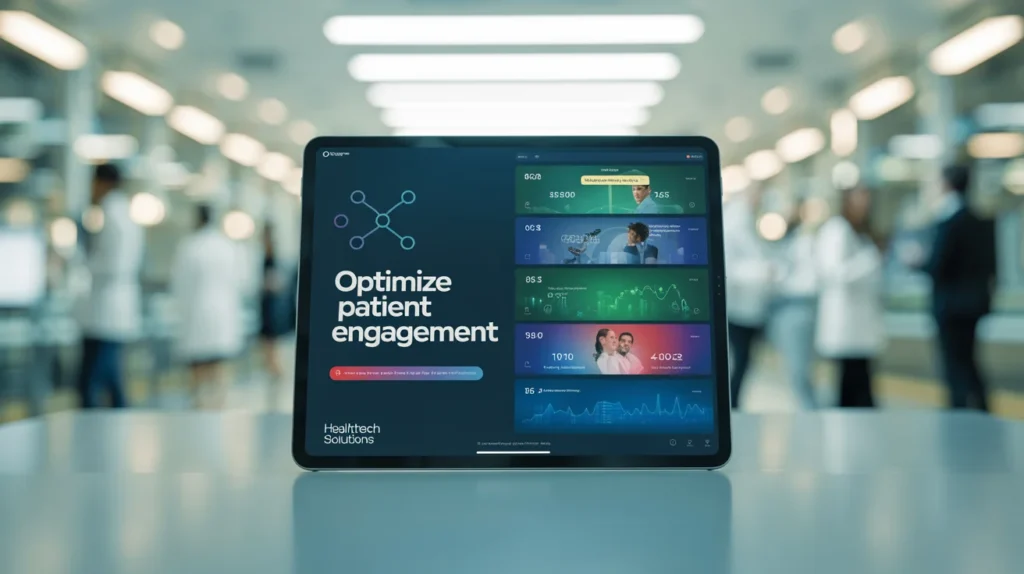Healthcare marketing campaigns have evolved dramatically in recent years. With digital transformation and patient expectations changing, healthcare providers must go beyond traditional advertising.
Today’s most successful campaigns focus on value, trust, personalization, and data-driven results.
Whether you’re a hospital, clinic, or private practice, understanding how to build an effective marketing strategy is critical to attracting, educating, and retaining patients.
Let’s explore powerful strategies, real-world examples, and action-oriented steps that define successful healthcare marketing campaigns in the modern era.
Patient-Centric Storytelling
Storytelling creates emotional connections and helps humanize healthcare brands. When patients see themselves in stories, trust grows naturally.
Great campaigns use real patient journeys, highlighting recovery, resilience, and care experiences. Instead of showcasing only services, these stories offer inspiration and build loyalty.
Why it works: Emotional marketing increases brand recall and patient confidence, especially in industries built on trust like healthcare.
Personalized Healthcare Messaging
Today’s consumers expect messages tailored to their unique needs, preferences, and health goals. Generic ads are often ignored, while personalized content is noticed.
Using data analytics, CRM tools, and AI-based platforms, healthcare brands can craft targeted emails, reminders, and health content that align with each patient’s history.
Impact: Personalization boosts engagement rates and helps patients feel understood, leading to stronger patient-provider relationships.
Leveraging Social Media in Healthcare Marketing Campaigns

Social media platforms are powerful tools for patient education and awareness. They offer real-time communication, educational value, and emotional support when used correctly.
Hospitals and clinics that post health tips, wellness videos, behind-the-scenes stories, and staff spotlights generate higher engagement. Instagram Reels, TikTok, and YouTube Shorts are especially popular for bite-sized healthcare content.
- Builds community around your brand
- Encourages shares, comments, and referrals
- Increases transparency and approachability
Educational Content Marketing
Patients actively search for health information online. Providing reliable, easy-to-understand content positions your brand as an authority.
Blogs, infographics, videos, and downloadable guides are excellent tools. Focus on symptom explanations, wellness advice, treatment breakdowns, and FAQS.
- Boosts SEO rankings with relevant long-tail keywords
- Increases time spent on your website
- Builds authority and earns trust from Google and patients
Reputation and Review Management
Online reviews shape patient choices more than ever. A single negative review can impact your brand’s credibility.
That’s why proactive reputation management must be part of all healthcare marketing campaigns.
Encourage satisfied patients to leave reviews, respond to all feedback professionally, and resolve concerns quickly.
Patients who see you care even after treatment become long-term advocates for your brand.
Geo-Targeted Local SEO for Healthcare
Local SEO helps clinics and healthcare providers appear in Google Maps and search results within a specific region. Most patients search for healthcare services “near me,” so optimizing local presence is key.
Use consistent NAP (Name, Address, Phone), claim Google Business Profile listings, and include local keywords in your content.
- Drives foot traffic from local searches
- Improves visibility in high-intent queries
- Helps attract the right target audience
SMS and Email Campaigns for Retention
Retention is often cheaper than acquisition. Healthcare email and SMS campaigns can remind patients of checkups, deliver lab reports, and share health tips.
These tools also allow personalized communication without being invasive. Effective timing and valuable content lead to stronger patient loyalty.
Influencer and Doctor-Led Branding Campaigns
When medical professionals lead branding efforts, it builds credibility. Patients trust experts more than corporate voices. Some healthcare providers now collaborate with micro-influencers or internal staff to share valuable health content.
This strategy adds authenticity and makes campaigns more relatable to general audiences.
PPC and Paid Ads with Smart Targeting
Paid advertising ensures visibility but only works when backed by data and intent. Smart targeting through platforms like Google Ads, Meta Ads, and LinkedIn Ads helps deliver messages to the right people.
Paid campaigns should focus on service-based keywords, urgent care needs, or seasonal health trends.
- Increases lead conversions quickly
- Ideal for promoting new services or seasonal campaigns
- Supports long-term brand visibility with remarketing
Mobile Optimization and UX in Campaign Strategy
Mobile-first marketing isn’t optional anymore. Most healthcare searches happen on smartphones, so websites and campaign landing pages must be fast, responsive, and user-friendly.
Poor mobile experience frustrates users and reduces conversion rates. Easy navigation, readable fonts, and mobile forms make all the difference.
- Enhances user satisfaction and trust
- Reduces bounce rates and increases bookings
- Aligns with Google’s mobile-first indexing
Real-World Examples of Successful Healthcare Campaigns
Let’s explore how leading healthcare providers have executed effective campaigns:
Cleveland Clinic – “Empathy Series”
They produced video campaigns highlighting the importance of empathy in healthcare, generating millions of views and high social shares. Their storytelling style deepened emotional resonance with viewers.
Mayo Clinic – “Sharing Mayo Clinic Blog”
Mayo’s blog allows real patients to share stories, building a community of advocacy and engagement. It strengthens SEO while offering authentic content that drives trust.
Why EEAT Matters in Healthcare Marketing
Google’s EEAT framework Expertise, Experience, Authoritativeness, and Trustworthiness) is critical in healthcare SEO. Content should:
- Be written or reviewed by certified professionals
- Contain references or citations where necessary.
- Reflect patient-first values and transparency.
Meeting EEAT standards improves your rankings and increases patient trust.
Conclusion:
The future of healthcare marketing campaigns lies in personalization, trust, and valuable patient interactions. With innovative tools, patient-first strategies, and ethical storytelling, your campaigns can drive real engagement and long-term growth.
As patients become more digital and data-savvy, your brand’s ability to communicate compassionately and consistently across platforms will define your success. Start building campaigns that not only inform but truly connect.
Frequently Asked Questions:
1. What are healthcare campaigns?
Healthcare campaigns are strategic efforts by healthcare providers to attract, engage, and retain patients using digital and traditional marketing tools.
2. Why are healthcare campaigns important?
Through targeted messaging and outreach, they help build brand trust, educate patients, improve visibility, and drive more appointments.
3. Which platforms work best for healthcare marketing?
Websites, Google Ads, social media (especially Instagram and Facebook), and email/SMS platforms are among the most effective.
4. How can I measure the success of a healthcare campaign?
Using Google Analytics, you can track KPIS such as website traffic, lead conversions, appointment bookings, social engagement, and ROI.
5. Are there legal restrictions on healthcare marketing?
Yes, campaigns must comply with laws like HIPAA and local regulations, ensuring privacy, honesty, and transparency in all communications.




